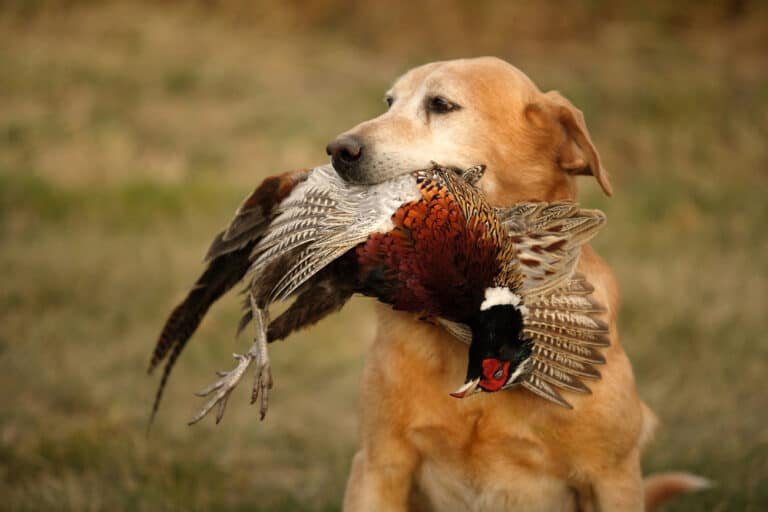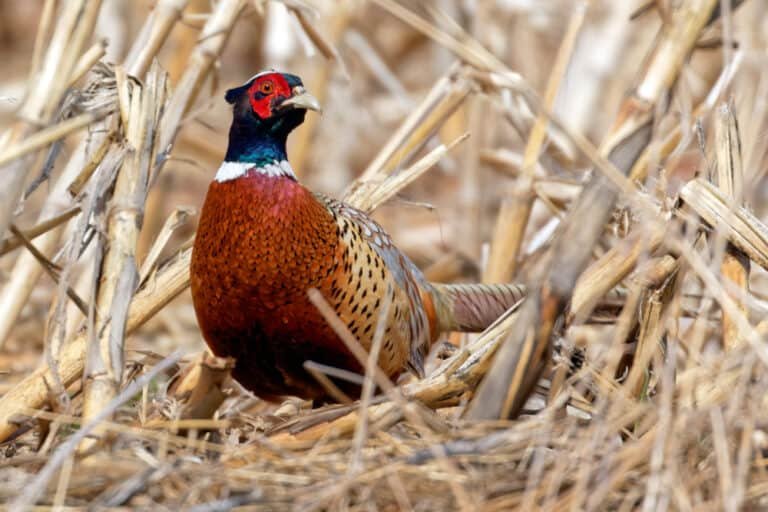Hunting Equipment for Dogs: Why It’s Dog Gone Important!
In the ancient art of hunting, one cannot overlook the invaluable contributions of our four-legged companions, hunting dogs. For centuries, humans have relied on the keen senses and unwavering loyalty of dogs to assist in tracking game and retrieving downed prey. In this blog we will discuss hunting equipment for dogs, because, well, they deserve it.
The bond between man and dog has been forged through mutual understanding and cooperation during hunts. Over time, this partnership has evolved, leading to the development of specialized hunting equipment that enhances a dog’s performance in the field.
The History and Importance of Hunting Dogs
The history of hunting dogs can be traced back thousands of years. From ancient civilizations such as Egypt and Assyria to medieval Europe, hunting with dogs has played a vital role in sustaining human populations by providing food sources.
Different breeds were selectively bred for specific purposes: some excelled at tracking scent trails, while others displayed remarkable water retrieval skills. Hunting dogs became indispensable assets to hunters because their instincts and abilities were honed through centuries of breeding and training.
Their acute sense of smell allows them to detect invisible scents to humans, making them ideal for tracking elusive prey through dense forests or vast plains. Additionally, their agility, speed, strength, stamina, and acute hearing further enhance their capabilities in assisting hunters.
How Hunting Equipment Enhances a Dog’s Performance
Hunting equipment is designed meticulously to augment a dog’s natural abilities while safeguarding its well-being during demanding hunts. One crucial aspect is collars and leashes control the dog’s movements without restricting their freedom. Collars vary in functionality depending on the type used: flat collars provide basic identification, while choke chains or martingale collars aid in training by providing gentle correction when necessary.
Leashes, on the other hand, can range from tracking leashes used in scent work to long-line leashes that offer greater control over a dog’s movements while maintaining their safety. Vests and harnesses are another category of hunting equipment for dogs that cater to the specific needs of dogs in the field.
Protective vests shield dogs from thorns, rough terrain, and harsh weather conditions, ensuring their safety and comfort. Hunting harnesses are designed to distribute weight evenly across a dog’s body when carrying gear or assisting in tracking tasks.
Hunting Equipment for Dogs – Collars and Leashes
Types
When hunting dogs, choosing the right collar is essential for their safety and control. There are several types of collars available, each serving different purposes. The most common options include flat collars, choke chains, and martingale collars.
A flat collar is the simplest and most widely used. It consists of a band that encircles the dog’s neck and attaches with a buckle or snap closure.
Flat collars are generally made from durable materials such as nylon or leather, ensuring they can withstand rugged hunting environments. They provide a reliable way to attach identification tags and can be easily personalized for individual dogs.
Choke chains, or slip or training collars, have a chain loop that tightens when pressure is applied to the leash. These are designed for training purposes rather than continuous use during hunts.
Correct usage requires proper training techniques to prevent dog neck harm. Martingale collars are popular among hunters because they provide better control without choking the dog and are one of the best pieces of hunting equipment for dogs.
They consist of two loops: a larger loop that fits around the dog’s neck and a smaller loop that connects to leash attachment points. When tension is applied, the smaller loop tightens slightly without fully closing like a choke chain would.
Purpose and benefits of using collars during hunts
Collars serve multiple functions during hunting expeditions with dogs. Foremost, they enable effective control over dogs in various scenarios while maintaining their safety:
- Identification: Collars are ideal for attaching identification tags containing vital information about the dog’s ownership details, vaccination records, or emergency contact information.
- Visibility: Hunting-specific collars often come in bright colors such as blaze orange or reflective materials, enhancing visibility in dense forests or low lighting conditions.
- Safety and Restraint: Collars allow hunters to secure their dogs when necessary, preventing them from straying into dangerous areas or encountering potential hazards. Additionally, they provide anchor points for leashes during training sessions or when navigating challenging terrain.
Specialized leashes for different hunting scenarios
In addition to collars, specialized leashes are vital hunting equipment that enables hunters to control their dogs effectively and adapt to various hunting scenarios. 1) Tracking leash: A tracking leash is designed with a longer length, typically 20-30 feet or more. Its extended range allows the dog to explore and track game while still under control.
The length provides freedom of movement without compromising safety. 2) Long-line leash: Similar to a tracking leash, a long-line leash offers additional freedom of movement but with a shorter length.
These leashes are generally around 10-15 feet long and are useful when a dog needs extra room but requires close supervision. Tracking and long-line leashes are made from durable materials that can withstand wear and tear associated with outdoor activities.
They usually feature strong hardware, such as heavy-duty clips or swivel hooks for secure attachment. These specialized leashes empower hunters with greater control over their dogs while ensuring their safety during hunts in challenging environments.
Additional Hunting Equipment for Dogs
GPS Tracking Systems
In the hunting world, GPS technology has revolutionized how we track and monitor our canine companions. GPS collars have become an invaluable tool for hunters, offering real-time tracking and activity monitoring capabilities.
These collars are equipped with advanced GPS receivers that accurately pinpoint a dog’s location, providing peace of mind to hunters who venture into vast wilderness areas. Furthermore, these collars often come with additional features such as boundary alerts, customizable safe zones, and even smartphone integration for seamless tracking.
With GPS tracking systems, hunters can better ensure the safety of their dogs by quickly locating them if they become lost or separated during the hunt. Additionally, these systems allow for analyzing and mapping hunting patterns over time, enabling hunters to make informed decisions based on their dogs’ behavior and movements.
Dog Boots and Paw Protection
The well-being of our hunting dogs is paramount while out in the field. Protecting their paws from various hazards encountered during hunts is essential to maintaining their health and performance.
Dog boots have emerged as a practical solution to shield sensitive paw pads from sharp objects, extreme temperatures, or rough terrain conditions that could cause injuries. Waterproof boots protect against wet environments, crossing streams, or marshy areas during hunts.
On the other hand, rugged sole boots provide added traction on slippery surfaces like rocks or ice. When choosing dog boots, it is crucial to consider factors such as proper fit and sizing to ensure optimal comfort for the dog during prolonged periods of physical activity.
Hidden Gems in Hunting Equipment for Dogs
Whistle Commands and Lanyards
As seasoned hunters know all too well, using whistle commands for training and communication with hunting dogs is a time-honored tradition. Whistles serve as distinct and consistent auditory cues that can be easily heard over long distances, even in adverse weather conditions. These commands are invaluable for directing the dog’s attention, signaling actions such as stopping, changing direction, or indicating the presence of the game.
To keep these essential tools readily accessible, hunters use specialized lanyards to securely hold their whistles around their necks or wrists. Lanyards designed for hunting often feature adjustable lengths, quick-release clasps, and additional attachments to accommodate other essentials like compasses or small gear items.

Conclusion – Hunting Equipment for Dogs
Hunting equipment for dogs encompasses a wide range of specialized tools and accessories that contribute to the safety and efficiency of our four-legged companions in the field. GPS tracking systems have revolutionized how we monitor our hunting dogs’ movements in real time while offering features like activity monitoring and mapping capabilities.
Dog boots provide essential paw protection against potential injuries from rugged terrains or challenging weather conditions encountered during hunts. This hunting equipment for dogs can be a real lifesaver on a cold and/or wet day.
Additionally, whistle commands coupled with lanyards offer reliable communication between hunters and their dogs in vast wilderness areas. By investing in quality hunting equipment for our beloved canines, we ensure their well-being and enhance our overall hunting experience with dependable partners by our side.






